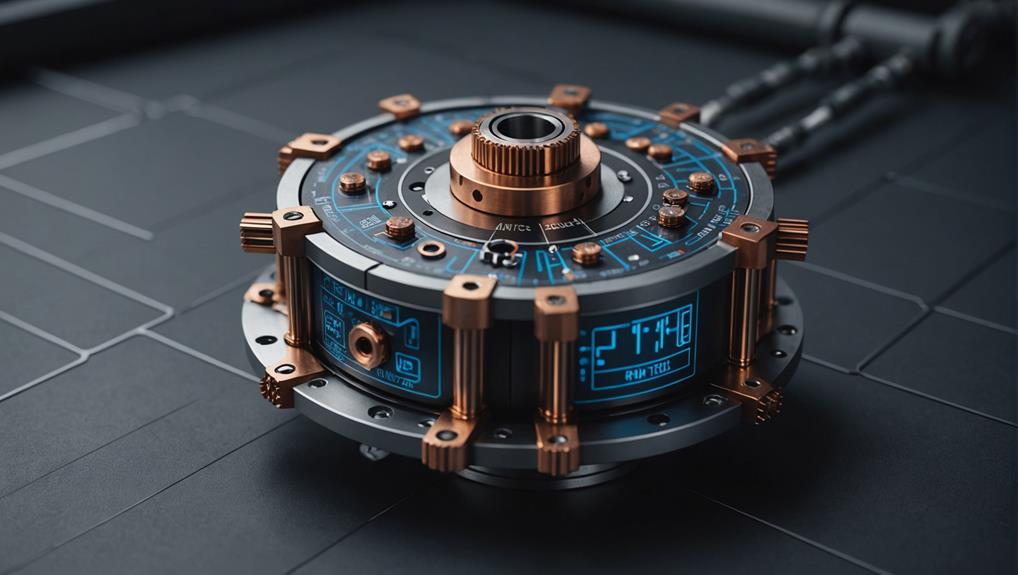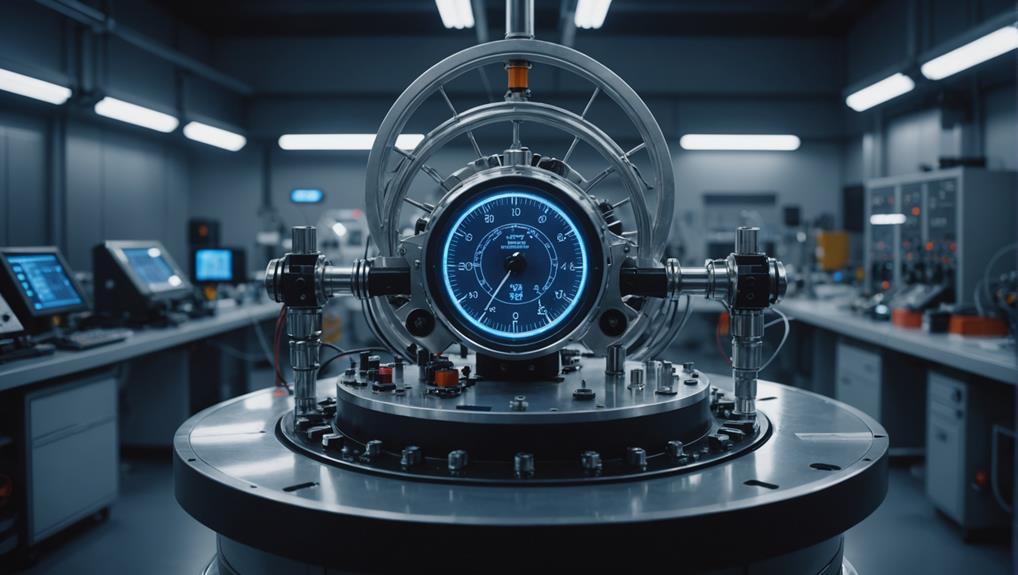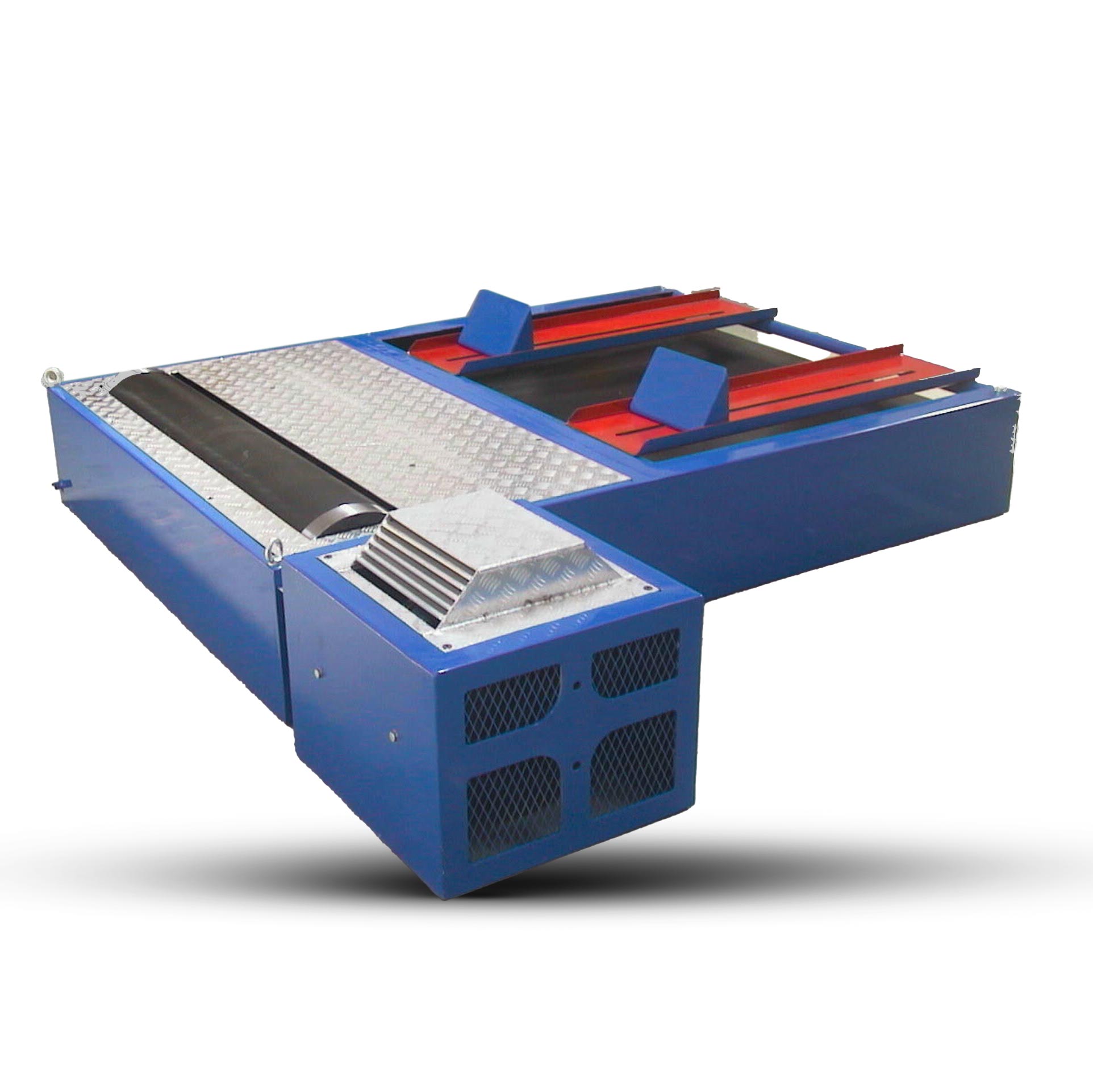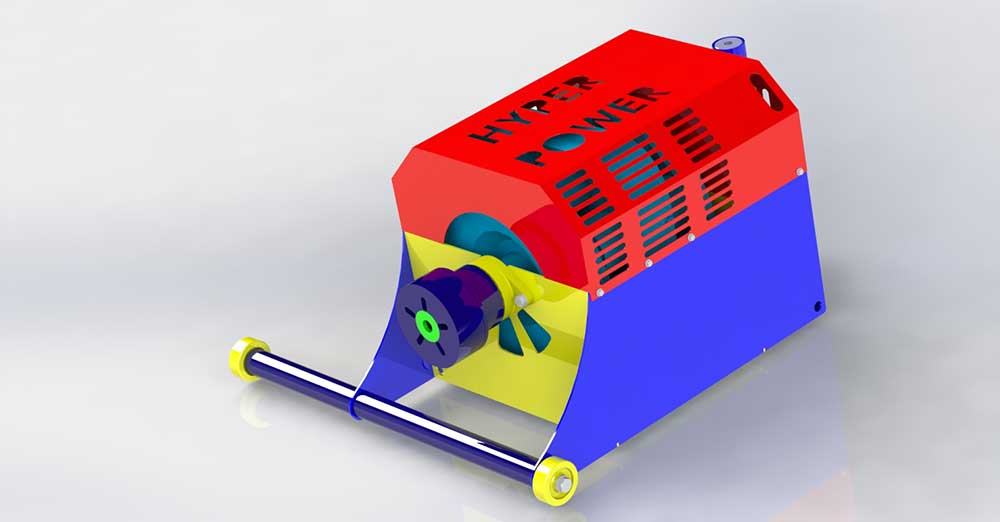
How Dynamometers Enhance Engine Diagnostics and Testing
Necessitating precise measurements, dynamometers unlock the secrets of engine performance, but what else can they reveal about engine diagnostics and testing?
Inertia dynamometers provide a superior engine diagnostic solution, offering rapid, accurate, and repeatable test results.
This enables engineers to precisely analyse engine performance, identify issues, and make targeted improvements with confidence. Detailed data analysis is facilitated, and real-world driving scenarios can be precisely replicated, saving time and resources.
Inertia dynamometers also provide accurate measurements of power and torque output, allowing for efficient engine modification evaluation and quick identification of performance issues.
Through the use of these dynamometers, engineers can gain a deeper insight into engine performance. Further investigation reveals the full extent of their diagnostic capabilities, enabling engineers to make informed decisions and optimise engine performance.
When it comes to engine diagnostics, obtaining accurate and reliable test results is crucial.
Inertia dynamometers excel in this respect, as their ability to rapidly accelerate the flywheel enables the testing of multiple small motor types with ease. This results in consistent and accurate data, allowing for precise comparisons and tuning.
Inertia dynos provide detailed data analysis, including graphs and datasheets, which facilitates the identification and diagnosis of engine problems and performance issues.
The compact design of inertia dynos makes them a convenient option for engine diagnostics, especially for small motor applications.
With inertia dynamometers, technicians can achieve repeated test results with high accuracy, enabling them to perfect motor function and performance, and diagnose issues more efficiently. This enables technicians to streamline their diagnostic processes, saving time and resources.
Precise engine performance measurements are the cornerstone of effective engine diagnostics and tuning.
Inertia dynamometers provide accurate engine performance measurements directly from the flywheel's acceleration, which is proportional to the engine's power output. This measurement method eliminates complex load control systems, ensuring consistent and reliable results.
Inertia dynamometers can measure engine performance across a wide range of operating conditions, including varying speeds, loads, and throttle positions, allowing for an exhaustive grasp of engine behaviour.
High-speed data acquisition systems in inertia dynamometers capture detailed information on engine performance, including torque, power, and speed, with high accuracy and resolution.
At high rpm, dynamometers measure power output and torque precisely, providing a clear picture of an engine's capabilities. Repeatability is a key advantage, as inertia dynamometers repeat test results with high accuracy, allowing for reliable comparisons and tuning of engine performance, and enabling the identification of even small changes in engine behaviour.
This level of accuracy and precision makes inertia dynamometers a vital tool for engine diagnostics and tuning.
Inertia dynamometers excel at simulating real-world driving conditions, allowing for precise analysis of an engine's performance under multiple loads and driving scenarios.
By replicating the dynamic nature of real-world driving, inertia dynos provide a more accurate representation of an engine's capabilities, enabling the identification of issues that may not be apparent under steady-state testing.
This approach enables engineers to fine-tune engine components and optimize performance in a way that closely mirrors real-world driving experiences.
Real-world load simulation is a crucial aspect of engine testing, as it enables engineers to replicate the dynamic loads and inertial forces that an engine encounters in real-world driving scenarios.
Inertia dynamometers simulate these conditions by accelerating a flywheel to measure power and torque, replicating the load an engine would experience on the road. This simulation allows for more accurate testing of engine performance, as it takes into account the dynamic loads and inertial forces that occur during real-world driving.
Unlike steady-state dynos, inertia dynos can capture the transient behaviour of engines, such as during acceleration and deceleration, providing a more thorough grasp of engine performance.
Engineers can test engines under diverse scenarios, including city driving, highway cruising, and aggressive acceleration, to identify areas for improvement. This enables the optimisation of engine calibration, reducing emissions and improving fuel efficiency, ultimately leading to better-performing and more environmentally friendly vehicles.
Engine performance testing can be substantially improved through the unique capabilities of inertia dynamometers, which accurately replicate the dynamic loads and inertial forces encountered during real-world driving scenarios.
Simulating real-world driving conditions, inertia dynamometers measure power and torque output with greater precision, providing a more realistic representation of an engine's performance. This is particularly crucial in engine diagnostics, as inertia dynos help identify issues that may not be apparent in steady-state testing, such as drivetrain losses and accessory loads.
Inertia dynos can test an engine's transient response, vital in real-world driving where an engine must quickly adapt to changing load conditions.
The real-world simulation capabilities of inertia dynos make them a vital tool for engine development, tuning, and diagnostics in industries such as automotive, aerospace, and motorsports. Providing a more accurate and thorough insight into engine performance, inertia dynamometers help engineers and technicians optimize engine design and performance, ultimately leading to improved vehicle performance and efficiency.
Accurate replication of real-world driving conditions is a critical aspect of engine performance testing, and inertia dynamometers excel in this regard.
They allow the engine to accelerate and decelerate freely, simulating the way a vehicle would behave on the road, providing a precise analysis of an engine's performance. This type of testing enables the identification of even the smallest issues or areas for improvement, making it an ideal tool for engine diagnostics and tuning.
Inertia dynamometers can test an engine's performance across a wide range of operating conditions, including varying speeds, loads, and temperatures.
The test data obtained from these simulations can be used to measure torque, speed, and load, providing valuable insights into engine performance. Results are highly repeatable, allowing engine builders and tuners to optimise engine performance, leading to improved fuel efficiency, increased power output, and refined overall engine reliability.
Simulating real-world driving conditions, inertia dynamometers provide a precise performance analysis, making them a vital tool for engine diagnostics and tuning.
Evaluating engine modifications efficiently is crucial in the pursuit of optimal performance, as it enables engineers to fine-tune their designs and make data-driven decisions.
Inertia dynamometers provide accurate measurements of power and torque output, allowing engineers to assess the effectiveness of engine modifications and make targeted improvements.
With inertia dynos, engine modifications can be tested rapidly, enabling swift iteration and refinement of designs. The repeatable and consistent results provided enable direct comparisons between different engine configurations, ensuring that modifications have the desired effect.
Inertia dynos can measure power output over a broad range of engine speeds, allowing engineers to evaluate engine performance under diverse operating conditions.
Through the use of inertia dynamometers, engineers can streamline engine testing and achieve optimal performance.
The dynamometer's rapid testing speed is a significant advantage, enabling technicians to swiftly assess engine performance and identify areas for improvement.
Inertia dynamometers can complete a test cycle in a mere 10-20 seconds, providing quick testing results that accelerate efficient engine diagnostics and tuning. This rapid testing capability allows technicians to swiftly identify performance issues and make data-driven decisions about repairs or modifications.
Inertia dynamometers provide consistent testing results, accurately measuring torque and speed, load sensors, throttle position, and rotational speed in revolutions.
These devices provide reliable and repeatable data, enabling technicians to track the effectiveness of repairs or modifications and make informed decisions about engine performance augmentations. With inertia dynamometers, technicians can trust the accuracy of their test results, ensuring that engine diagnostics are both efficient and effective.
As a result, technicians can confidently diagnose and resolve engine performance issues, delivering high-quality results to their customers.
Inertia dynamometers stand out for their ability to minimize engine component wear and tear, a critical consideration for technicians seeking to optimize engine performance while preserving engine longevity.
Subjecting the engine to stress levels equivalent to normal driving conditions, inertia dynamometers extend the engine's lifespan. Unlike traditional brake-style dynos, inertia dynos do not require the engine to operate at intensified temperatures or generate excessive heat, thereby reducing wear on components like engine bearings and cylinder heads.
The short testing duration of inertia dynos, typically 10-20 seconds, further reduces wear and tear on engine components compared to longer, more stressful testing procedures. Inertia dynos do not require the use of load control valves, throttle actuators, or other components that can introduce additional stress and wear on the engine during testing.
The elimination of hot or cold fluids in inertia dynos removes the risk of thermal shock, which can cause premature wear on engine components like cylinder heads and engine blocks, thus minimizing the risk of damage to the cooling system and guaranteeing optimal operating temperatures.
Benefits of Inertia Dynamometers for Engine Diagnostics
Hyper Power recognises the importance of accurate engine diagnostics. Our expertise lies in providing cutting-edge solutions for engine testing and analysis.
Advantages of Inertia Dynos for Diagnostics
Accurate Engine Performance Measurements
Our inertia dynamometers provide precise measurements of engine performance, enabling accurate diagnosis of issues. By directly measuring torque and speed, these devices offer a more reliable method of evaluation compared to indirect methods.
Real-World Driving Condition Simulation
Inertia dynamometers can simulate real-world driving conditions, enabling the replication of complex load scenarios. This allows for a more thorough grasp of engine behaviour under diverse operating conditions.
Efficient Engine Modification Evaluation
Our inertia dynamometers expedite the efficient evaluation of engine modifications. By quickly and accurately gauging the impact of changes, engineers can optimise engine performance and reduce development time.
Quick and Consistent Testing Results
Inertia dynamometers enable rapid testing, providing consistent results that reduce the variability associated with human testing. This leads to faster diagnosis and repair of engine issues.
Minimal Engine Component Wear and Tear
Inertia dynamometers minimise engine component wear and tear, reducing the risk of damage during testing. This results in cost savings and extended engine lifespan.
In summary, inertia dynamometers offer several advantages for engine diagnostics, including accurate performance measurements, real-world condition simulation, efficient modification evaluation, quick testing results, and minimal engine wear. These benefits enable engineers to optimise engine performance and reduce development time.
If you have any questions about our Custom Dyno Solutions, Installation and Setup, Training and Certification, Technical Support and Maintenance, Software Updates and Upgrades, Diagnostics and Performance Analysis, Rental Services, Dynamometer Testing Services, or Accessories and Parts, please do not hesitate to contact Hyper Power.

Necessitating precise measurements, dynamometers unlock the secrets of engine performance, but what else can they reveal about engine diagnostics and testing?

Navigating the complexities of torque measurement requires a deep understanding of the underlying principles and mechanisms to ensure accurate results.

Precise control and optimization of engine performance await, but only for those who unlock the secrets of dynamometer-driven data analysis.

Gaining insight into the differences between inertia and brake dynamometers is crucial for ensuring accurate testing results in various industries.

Tapping into the precise measurement capabilities of dynamometers, uncover the secrets to optimizing fuel efficiency and slashing emissions in the automotive industry.

Witness the importance of rigorous safety protocols and best practices in dynamometer testing to avoid catastrophic failures and ensure accurate results.

Harnessing the nuances of precision measurement is crucial to avoiding costly errors in dynamometer testing, but what are the key factors to consider?

Witness the transformative power of dynamometers in unlocking your vehicle’s hidden performance potential, but only if you know how to harness their precision.





